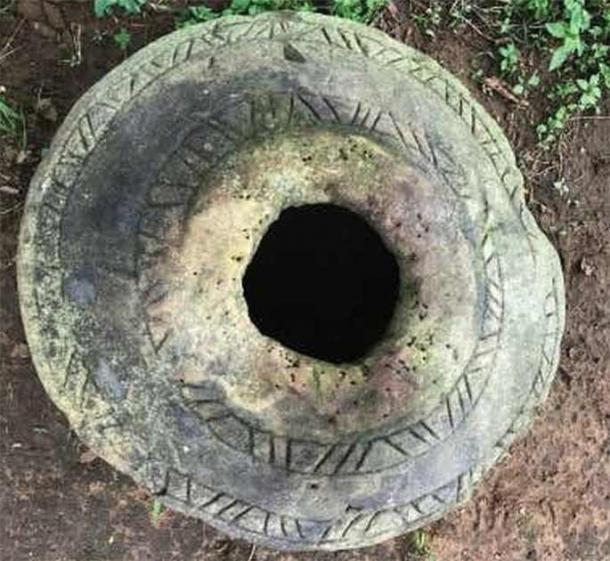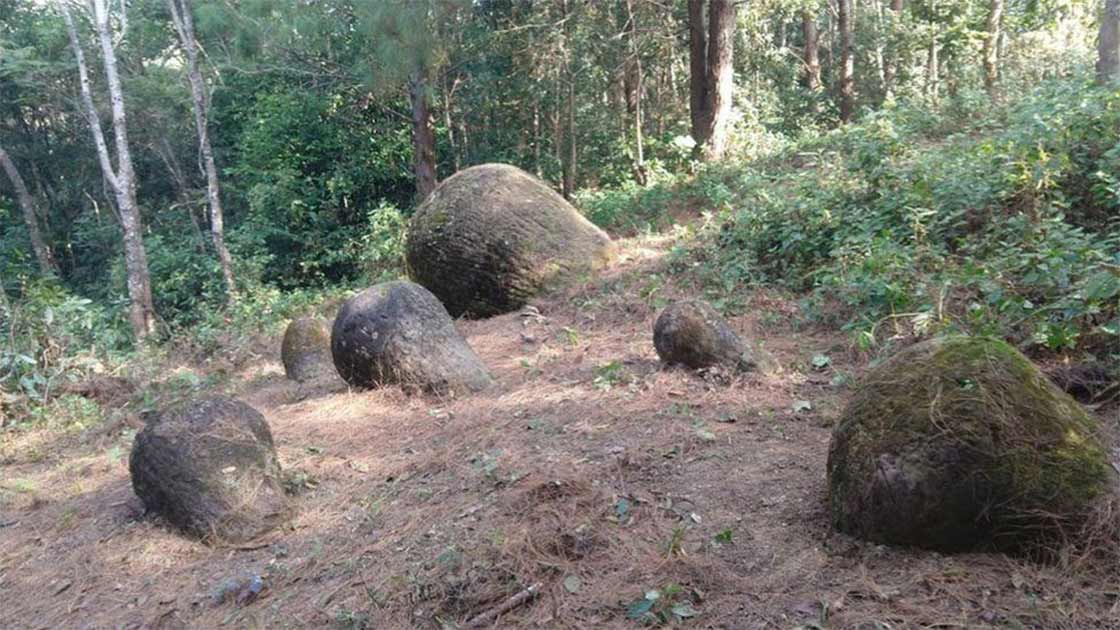Ancient Stone Jars Discovered at Four Forest Sites in India’s Assam
A team of researchers has documented the find of “mystery” stone jars from the state of Assam in northeastern India. The 65 stone jars were unearthed in 2020 from four sites across the Dima Hasao province in Assam. Remarkably, similar jars have been found at ancient sites in Laos and Indonesia. According to the BBC, the jars are not homogenous in size and shape, with some being tall and cylindrical and others partly or fully buried in the ground. They were likely used for human burials.
The researchers are from three universities - the North-Eastern State University in Assam (NEHU), Nagaland University in the state of Nagaland in India and Australian National University (ANU). Although such stone jars have been unearthed from sites across the states of Assam and neighboring Meghalaya from the early twentieth century, systematic recording of the finds began only in 2014 as a collaboration between NEHU, Nagaland University and the Archaeological Survey of India.
In 2020, researchers from ANU found the 65 jars at four newly discovered sites, taking the number of such sites from seven to 11. This latest study published in the journal Asian Archaeology documents the 2020 findings.

The jars are large and have cavities inside and were likely carved from boulders. (Tilok Thakuria / Asian Archaeology)
A Dense Forest Dotted with Megalithic Stone Jar Sites
The sites are located in the lush jungles of Assam. The ANU team only planned to further examine known sites but as they explored the dense forest, they stumbled upon more of these curious limestone jars. Co-author Nicolas Skopal told Newsweek that so far they have “only scratched the surface” of the stone jar sites.
“We've started to find more. It's a lot of jungle and forest. We've literally only looked at one little area. There must be more, because every time we wander out, we find new sites.”
Over the years some 10 sites and 700 jars have been found in Assam.
The jars, the scholars believe were carved from boulders that could have come from a stone quarry in Assam or from a creek or riverbed. The insides of the jars clearly show grooves where an implement was used to carve them. “Then they had to transport it. It would have been hundreds of men pulling it, or putting it on a trolley,” Skopal said, talking to Newsweek.
Tilok Thakuria, joint lead of the study with Uttam Bathari, told the BBC that “presently the jars are empty”. Once, they must have been covered with lids. “The next step in this project is to excavate and extensively document features of these jars,” he said outlining the immediate task the team has at hand.
However, they also hope to add to their already rich material. The jars lie scattered in the jungle exposed to the elements. It is possible that their contents have been removed by people. The team hopes to find more remote sites that are more likely to deliver a more complete archaeological record that would give a better understanding of their purpose and their makers. As of now, though, “we still don't know who made the giant jars or where they lived. It's all a bit of a mystery”, said Skopal, according to the BBC. It also isn’t clear what use the jars were put to, although the scholars are of the opinion that they were “likely associated with mortuary practices”.
One reason for this belief is that “there are stories from the Naga people (an ethnic group in north-eastern India) of finding the Assam jars filled with cremated remains, beads and other material artifacts”.
- The Plain of Jars: A Megalithic Archaeological Mystery in Laos
- The Crocodile Stone: Is This a Grisly Artifact of Human Sacrifice?
From Assam to Laos, a Connection Spanning 800 Kilometers
That is not all, however. Similar jars, although even more enormous with some going up to 10 feet (3 meters) in height and 6.5 feet (2 meters) in width, found in 2016 in Laos were found to contain cremated human remains. The Assam sites are believed to have a link with the Laos jar sites that lie some 800 kilometers (500 miles) to the southeast.

Nicholas Skopal, from ANU, surveying a site with similar jars in Laos. The jars in this area are filled with cremated remains. (Tilok Thakuria / Asian Archaeology)
The jars in Assam have not yet been dated but the Laos sites go back to around 1000 BC, with some later burials from around 1000 AD around the sites. This indicates that the sites were populated for at least 2,000 years, although whether by the same peoples or new groups that had moved there is not known. Once the researchers have been able to date the Assam jars, they will have a better idea about whether the stone jar burials culture moved to Assam from Laos or whether it was the other way round.
The team believes there is an urgency to finding more of the jar sites in Assam before rapid forest clearing for agriculture destroys them. “Once the sites have been recorded, it becomes easier for the government to work with the local communities to protect and maintain them so they are not being destroyed,” Newsweek reports Skopal as saying. Given that the culture that made the stone jars has altogether vanished, it is important to collect and preserve the sparse historical record it has left behind.
Top image: The 65 sandstone jars were found scattered over four sites in the north-eastern state of Assam, India. Source: Tilok Thakuria et al., Asian Archaeology, 2022
By Sahir Pandey
References
BBC. Assam: 'Mysterious' giant stone jars found in India. Available at: https://www.bbc.com/news/world-asia-india-60937348.
Hart, A. 2022. Mysterious giant stone jars of a lost people found in India. Available at: https://cosmosmagazine.com/history/giant-ancient-stone-jars-india/.
Osborne, H. 2022. Forest Full of Mysterious, Prehistoric Giant Jars Discovered. Available at: https://www.newsweek.com/mystery-ancient-giant-stone-jars-forest-india-1693700.
Thakuria, T., Bathari, U. and Skopal, N. 2022. An archaeological survey of the Assam stone jar sites. Available at: https://link.springer.com/article/10.1007/s41826-022-00043-3.



















